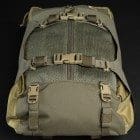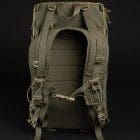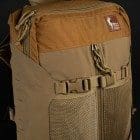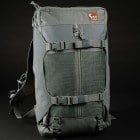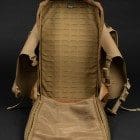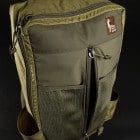ARLINGTON, VA – Defense Department actions to address three key concerns of the defense industrial base amidst the COVID-19 virus outbreak have resulted from daily meetings last week with the National Defense Industrial Association, its fellow associations and the DoD, the Arlington, VA-based association announces today.
Details of the progress so far may be found in this DoD release.
The three concerns are the ability of critical defense contractor workforce to keep working, to ensure cash flow to the defense industrial base, and to get standardized guidance out to industry. The meetings, which continue, are led by Jennifer Santos, deputy assistant secretary of Defense for industrial policy.
On Friday, March 20, DoD issued two memos that address all three concerns:
* Ellen Lord, Under Secretary of Defense for Acquisition and Sustainment issued a Defense Industrial Base Essential Critical Infrastructure Workforce memo. It defines the defense industrial base (DIB) workforce and ensures its critical employees can continue working. It also reiterated Lord’s commitment to workforce safety and her support of the national security. The memo followed Lord’s close work with Congress and the Department of Homeland Security.
* Kim Herrington, director of Defense Pricing and Contracting, issued a Deviation on Progress Payments memo. Among actions, the memo states that once in contracts, the progress payment rate that contracts can get paid for will increase from 80% of cost to 90% for large businesses, and from 90% to 95% for small businesses. Also, DoD will accelerate payments through several means to prime contracts and direct prime contractors to expedite payments to subcontractors.
Please consult the DoD release for detailed information.
“NDIA’s work here is incredibly important,” said President and CEO Hawk Carlisle. “It gets right to the heart of what we do as an organization and allows us make a big impact in support of the defense industrial base during this critical time. We’ll continue to voice the issues the defense industrial base is facing and help the Office of the Secretary of Defense in crafting solutions.”
Lord’s Acquisition and Sustainment leaders in Industrial Policy, Defense Pricing and Contracting, Defense Logistics Agency, and the Defense Contracting Management Agency are part of this continuing dialog with NDIA, the Aerospace Industries Association, the Professional Services Council, and the U.S. Chamber of Commerce.
-—
NDIA to small businesses: We’ll take your COVID-19 concerns to DoD
ARLINGTON, VA – The Defense Department’s Office of Acquisition and Sustainment wants to know what challenges small-business contractors are facing in response to the COVID-19 crisis. A five-minute survey from the National Defense Industrial Association will collect contractors’ initial impacts and concerns for DoD officials by Friday, March 27, the Arlington, VA, association announces today.
Of the more than 300,000 businesses that work with the Defense Department, a vast majority is small business. Of the 1,700 companies with NDIA membership, about 70% is small business. All information from the survey will remain confidential and anonymous; no comments will have individual attribution. Participation is voluntary, and respondents don’t need to answer any or all of the questions posed.
“We greatly appreciate the time small businesses will take to complete this survey,” said Corbin Evans, principal director of strategic programs at NDIA, who is managing the survey. “The time they spend doing this survey will help themselves, fellow small-businesses and the Defense Department respond and ensure a healthy industrial base when this crisis ends.”
Questions about the survey, its purpose or contents may be sent to Evans at Cevans@NDIA.org












